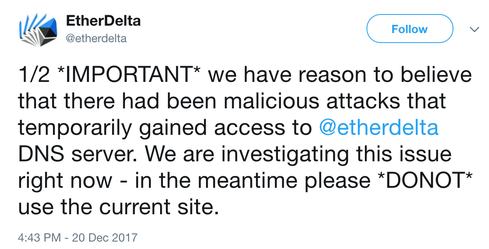CISOs Play Rising Role In Business
Chief information security officers are playing a more integral — and more important — role in business, and their experience and qualifications are shifting to fit those requirements, researchers say.
Nearly half (45%) of Fortune 500 CISOs with graduate degrees have MBAs, indicating a shift in responsibilities as security leaders become more prominent within the business, according to an analysis of Fortune 500 senior security leaders conducted by Forrester Research. The findings paint a fresh picture of the modern CISO — a position that barely existed 20 years ago but is rapidly becoming a key contributor to the boardroom.
“From 2014 to today, the CISO has evolved to be one of the centerpieces inside an organization. This is especially as more and more businesses become dependent on data and software to make money, which is virtually every business today,” says Jeff Pollard, principal analyst at Forrester serving security and risk professionals.
CISOs used to be internally focused and didn’t spend as much time securing customers’ information, Pollard observes. Today’s CISOs have emerged as public figures as they engage with customers and secure the products people use, he says.
“The perimeter once was very small,” says Eitan Bremler, Safe-T co-founder and VP of products. “Before 2010, companies were islands. You had your own data and shared internally. As time goes by and organizations become more digital, they’re exposing themselves to the outside world.” Cloud services, remote workers, and customers’ abilities to exchange and access data have all expanded the attack surface, Bremler notes.
Bridging the business, tech gap
These organizational shifts have driven changes in the skills demanded of CISOs. Most have technical backgrounds but have to understand business skills and strategy as their careers grow. Graduate degrees are not mandatory but are becoming increasingly common: 43% of Fortune 500 CISOs have a graduate degree and on average, most were earned eight years after their bachelor’s.
After the MBA, the most popular graduate degree for CISOs are master’s degrees in computer science and information systems.
“Someone who was more technical in the past is becoming more strategic,” says Pollard. “The CISO already has a foundation in technology, and other execs will turn to them for advice and coaching on how to understand tech and compliance and risk.”
As CISOs take on more strategic duties, their organizations may split responsibilities differently in the IT and risk areas. Bremler points to the chief risk officer (CRO) as someone who previously reported to the CISO, but now has a more separate role as risk and regulation grow. Some businesses bundle security and networking under the CISO; some split the two and put networking under the CIO. Some CISOs own security implementation, while the CIO handles system and business applications.
“We see a lot of CISOs step away from device management and sending it to service providers and contractors,” Pollard notes. “Another big area is learning to balance staffing requirements.” CISOs don’t need an on-staff expert in everything, but will need to turn to on-demand experts on occasion. The key is learning to be efficient.
Several technologies have also shaped the way CISOs do their jobs. Pollard says artificial intelligence, machine learning, data visualization, and orchestration will help security leaders be more efficient and teams be more productive. Bremler points to software-defined networking as a major example of how businesses understand the way networks are changing.
Tenure exceeds expectations
Forrester researchers found that tenure among Fortune 500 CISOs has gotten longer as large companies understand the value in building and improving their security programs. Fortune 500 CISOs average 4.5 years of tenure, longer than data indicating an average of 17 months among CISOs overall.
“One of the major reasons why CISOs are sticking around is because when security wasn’t as valuable, it was opaque,” Pollard says. “It was impossible to figure out what security was actually doing … it was hard to figure out why it had value.”
Now, security has more visibility as a board-level issue. It isn’t viewed as a cost center but as a value-add to the business. As a result, CISOs don’t hunt for new positions as quickly. If they want to drive change, they need to stay and understand their organization.
In larger companies, however, most CISOs don’t rise from the ranks. Nearly 60% of Fortune 500 CISOs were external hires, as were 64% of Fortune 100 CISOs. Larger companies prefer CISOs to have more experience and a fresh perspective. External hires usually land higher on the org chart than those promoted internally: two-thirds of SVP-level CISOs came from outside the business.
“If you’re a senior leader and report to the CISO at a Fortune 100 company, loyalty is probably not your best option,” says Pollard. “If you’re getting recruiting emails about CISO roles, you need to answer those.”
That said, there are instances in which promoting a CISO from within is beneficial, experts say. Companies hesitant to change will benefit from hiring internally because an internally-hired CISO will understand the business and won’t have the same cultural learning curve.
Related Content:
- 2017 Security Predictions through the Rear Window
- Businesses Go on Pre-Holiday Cloud Acquisition Spree
- CISO Holiday Miracle Wish List
- Why Network Visibility Is Critical to Removing Security Blind Spots
Kelly Sheridan is Associate Editor at Dark Reading. She started her career in business tech journalism at Insurance Technology and most recently reported for InformationWeek, where she covered Microsoft and business IT. Sheridan earned her BA at Villanova University. View Full Bio
Article source: https://www.darkreading.com/careers-and-people/cisos-play-rising-role-in-business/d/d-id/1330708?_mc=rss_x_drr_edt_aud_dr_x_x-rss-simple

